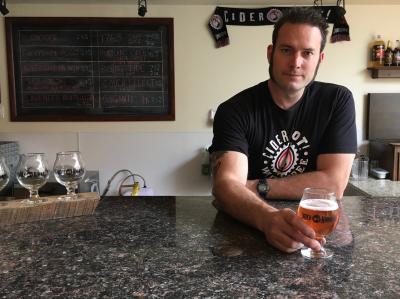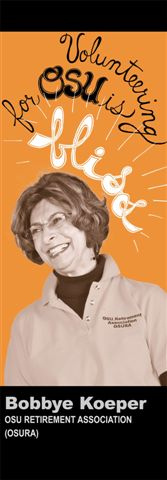Chad Johnson, WR, #80:

Chad Johnson was born in Miami, Florida where he attended Miami Beach Senior High School. After graduating in 1997, Johnson attended Langston University but did not play football before transferring to Santa Monica College to resume his career. While at SMC, Johnson played alongside another NFL legend wide receiver Steve Smith, and the pair played a vital role in the team’s success. After two seasons in Santa Monica, Johnson was heavily recruited by Dennis Erickson to join the Oregon State Beavers on their quest to gain prominence in the Pac-10, and Johnson helped them do just that. In his lone season in Corvallis, Johnson posted a stat line of 37 receptions for 806 yards and 8 touchdowns leading the team in the latter two categories. #80 broke the record for longest receiving touchdown in Oregon State Football history with a 97 yard touchdown grab against Stanford, solidifying himself as one of the premier deep threats of the 2000-01 College Football season. In his final game at Oregon State the standout wide receiver hauled in 4 catches for 93 yards and 2 touchdowns in the Beavers romping of Notre Dame in their first bowl game win since 1962.
In the following NFL draft Chad Johnson was selected by the Cincinnati Bengals in the with the 36th overall pick in the second round. Donning the number 85 once he entered the NFL, Johnson legally changed his name to Chad OchoCinco before changing it back to Johnson in 2012. Over the course of his NFL career Johnson was a 6x Pro-Bowler, 3x All-Pro, and the 2006 NFL receiving yards leader amassing 1,369 yards. After spending the first 10 years of his career with the Bengals, Johnson played his final season in the NFL as a member of the New England Patriots. He concluded his decorated career with 766 catches, over 11,000 yards, and 67 touchdowns.
Jonathan Smith, QB, #9

Born in Pasadena, California, Jonathan Smith graduated from Glendora High School in 1997. As an accomplished quarterback in high school, Smith took his talents north to Corvallis and walked-on to the team as a True Freshman under then Head Coach Mike Riley. Quickly making an impact within the program, Smith was named the teams starting quarterback halfway through his Redshirt Freshman season, leading them to a win in the annual Civil War game against the #15 ranked Oregon Ducks. Once named the quarterback, Smith never relinquished the role starting 41 games in his career as a 4-year starter. He finished his career as a Beaver with an impressive 9,680 yards and 55 touchdown passes, highlighted by the historic 2000-01 season leading the Beavers to an 11-1 record and earning the honors of MVP of the 2001 Fiesta Bowl.
After graduating from Oregon State, Smith immediately stepped into the realm of coaching, serving as a graduate assistant with the Beavers in 2002 and 2003 under Erickson and Riley.
He then served as a quarterback’s coach for multiple schools, Offensive Coordinator at Montana and Co-Offensive Coordinator at the University of Washington, before ultimately accepting the role of Head Coach at his alma mater Oregon State University in 2018. The Beavers struggled in his first season at the helm, but showed steady improvement in their 2019 campaign, winning 3 more games than they did in the previous season and finishing tied for 2nd in the Pac-12 North. Smith and the Beavers aim to build on their recent success and put together a strong season in the shorted 2020 Pac-12 play.
Ken Simonton, RB, #35

An elite multi-faceted athlete in high school, Simonton competed in both football and baseball for Pittsburg High School earning all-league honors in both sports his sophomore through senior year. Growing up in Southern California, Simonton wished to play football for USC and was being recruited by then Trojans assistant Coach of Mike Riley, but when Riley was hired as the Head Coach at OSU, he was able to convince Simonton to join him in Corvallis. The freshman running back burst onto the scene, becoming only the second running back in the history of the Pac-10 to eclipse the 1,000-yard mark as a Freshman, averaging 93.5 yards per game. Over the course of the next three seasons, Simonton surpassed 1,000 yards rushing 2 of the 3 years bringing his career total to an impressive 5,044. Simonton’s efforts at OSU did not go unnoticed, following his Junior year, the best statistical season of his career, the running back was named First Team all Pac-10 and First Team All-American as well as finishing 9th in the Heisman Trophy Voting.
Despite his outstanding performance at OSU, Simonton went undrafted in the 2002 NFL draft largely in part to the questions about his size and durability as an NFL back. He was signed briefly by the San Francisco 49er’s but was released after a short period. He received his next opportunity in 2003 with the Buffalo Bills who reassigned him to the Scottish Claymores of NFL Europe where he earned league MVP honors. He returned to the United States and played one season of limited action with the Bills before his release. Over the course of the next few years he was signed for limited periods of time by a couple NFL teams, one of which was coached by his former college coach Dennis Erickson, but ultimately, he retired from the NFL in 2005.
Ken Simonton was inducted into the Oregon State University Hall of Fame in 2015 and is currently on the ballot for the College Football Hall of Fame where voting will begin in 2021.
Nick Barnett, LB, #42

A native of Barstow, California, Barnett made his debut with the Beavers as a Freshman in 1999 season with limited playing time. In his Sophomore season he started 5 of the 12 games he played in, beginning to create a name for himself and creating momentum for a big leap into his Junior season. In his third year as a Beav, Barnett recorded 73 tackles, 6 tackles for loss, and 4 pass break ups. A solid player up to this point in his career, Barnett asserted himself as an elite strong side linebacker in the Pac-10 his senior season recording 121 tackles to lead the conference, 21 tackles for loss, and 6 sacks earning him First-Team All-Pac-10 selection.
A breakout season as a senior earned him a selection in the first round of the 2003 NFL Draft (29th overall) by the Green Bay Packers. The Packers signed Barnett to a 5-year, $6 million rookie contract, which he far outperformed and was signed to an additional 6 year, $34.85 million contract in 2007. After spending his first 8 seasons with Green Bay, Nick rounded out his NFL career with 2 seasons in Buffalo with the Bills and his final with the Washington Redskins. 2005 marked the best statistical season of Barnett’s career, recording 138 tackles marking 13th best in the league.
Barnett was a part of the Super Bowl winning Packers squad in 2011 who defeated the Pittsburgh Steelers but was unable to play in the game due to injury.
T.J. Houshmandzadeh, WR, #84

After dropping out of Barstow High School, T.J. Houshmandzadeh elected to pursue his dream of football by attending Cerritos College, a local Junior College. T.J. excelled on the field, playing wide receiver and kick returner he earned consecutive First Team Mission Conference Selections which was enough to earn him an offer from Coach Erickson at Oregon State University. Upon arrival at OSU, he teamed up with fellow receiver Chad Johnson to form one of the most dynamic 1-2 punches in all of college football. The 6’2 205-pound standout reeled in 42 passes for 656 yards and 6 touchdowns en route to an 11-1 season, the best finish in the history of the program. In the 2001 Fiesta Bowl T.J. hauled in a touchdown grab as the Beavers handled the Notre Dame Fighting Irish 41-9.
Following his season at OSU, T.J. was drafted alongside his running mate Chad Johnson by the Cincinnati Bengals in the 7th round (204th overall) of the 2001 NFL draft. T.J. was used by the Bengals in a similar fashion to his time at Cerritos College, being utilized as both a receiver and a returner, setting a Bengals team record of 126 punt return yards in a single contest. In 2009 T.J. was lured away from the Bengals by a 5-year $40 contract from the Seattle Seahawks but was released only a year later. He served short stints with the Baltimore Ravens and Oakland Raiders in the following two seasons before announcing his retirement.
This post is the last in a series contributed by SCARC Student Archivist Greyson Wolff, a senior Business Administration student who has worked in SCARC since August of 2019.









